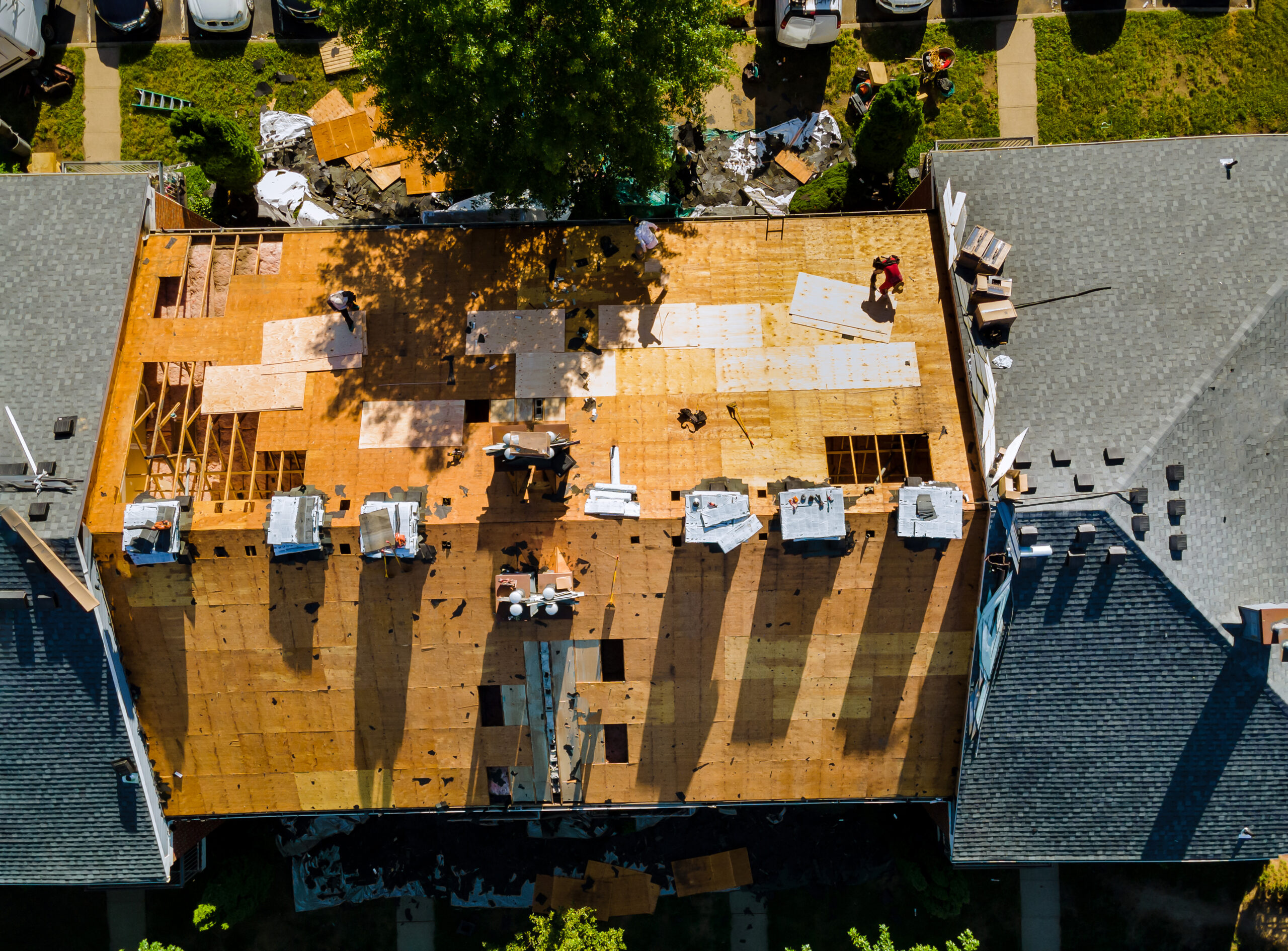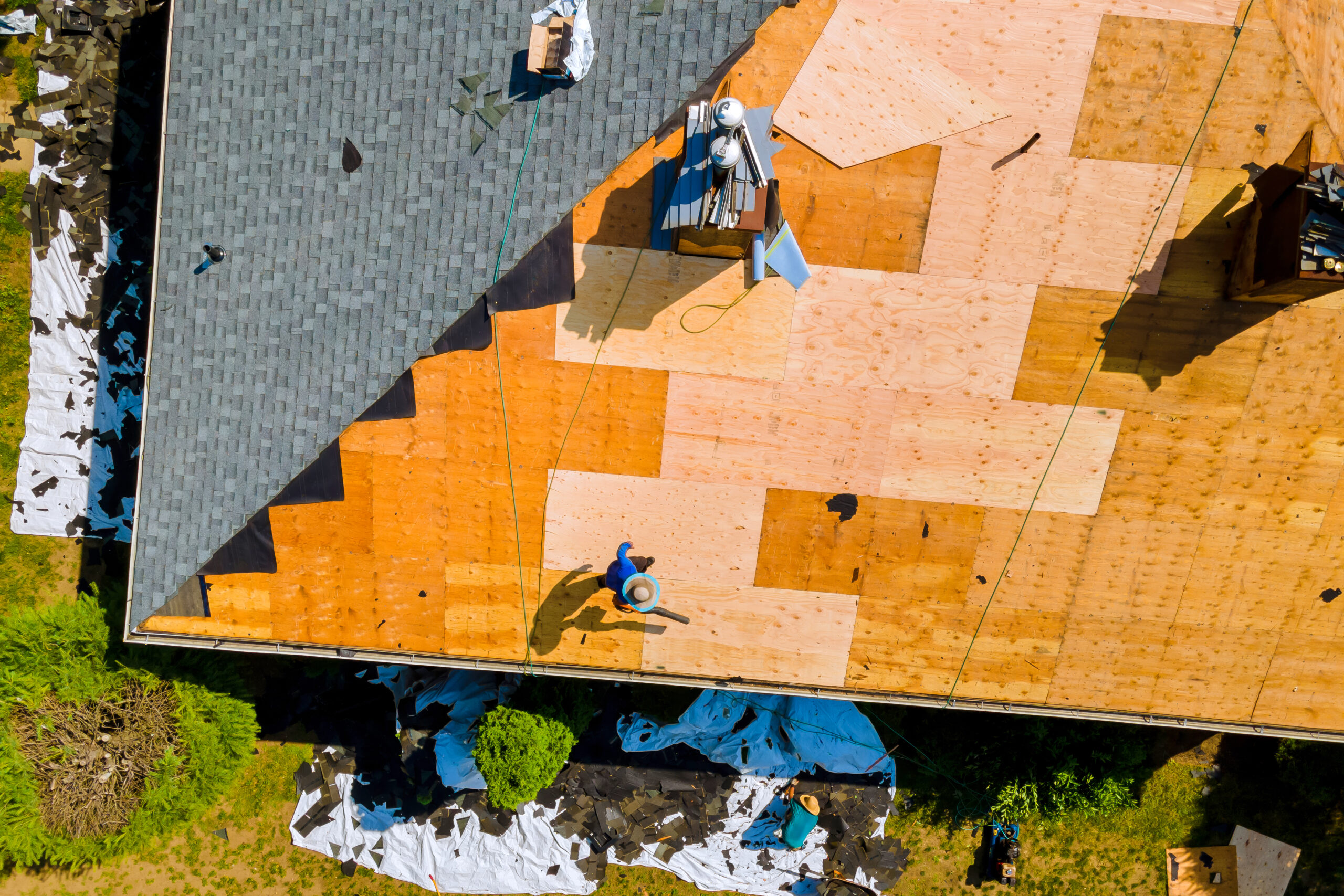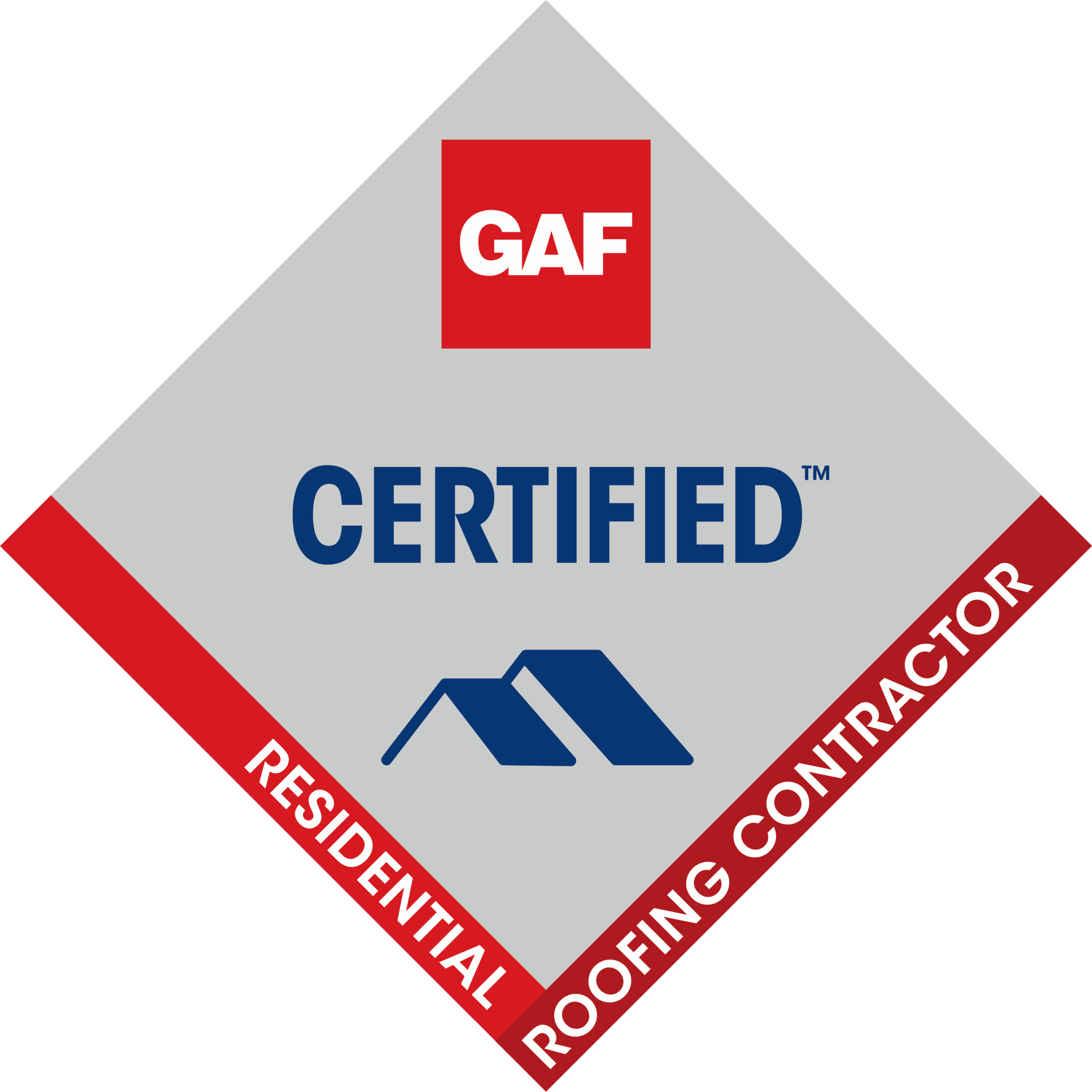A roof is much more than the shingles you see from the street. It’s a complete system of components that work together like puzzle pieces to keep your home safe and dry. If even one piece is missing, it can lead to costly problems down the road.
Here’s a breakdown of what you’re paying to get replaced and installed during a full roof replacement:
- Roof Decking (Sheathing): This is the wooden foundation (plywood or planks) that your entire roof is built on. A roofer won’t know if or how much of the decking needs to be replaced until the old roof is torn off. If boards are rotten or can’t support the new roof, they must be replaced before installation can begin.
- Drip Edge: This is a metal flashing installed at the edges of the roof to prevent water from getting underneath your new roofing materials. Drip edge is a required building code, and excluding it is a common way for bad roofers to cut costs.
- Underlayment: This is a felt or synthetic material installed on top of the decking to provide an extra layer of waterproof protection. If any water gets past your shingles, the underlayment is the next line of defense. Synthetic underlayment is more durable and water-resistant than traditional felt.
- Ice and Water Shield: A waterproof membrane that protects your roof from damage caused by ice and water, especially in vulnerable areas like roof valleys and around penetrations. It’s also commonly installed along the eaves to prevent leaks from ice dams.
- Roof Flashing: A metal material that directs water away from key areas of your roof, such as around chimneys, walls, and valleys. You should always replace flashing when getting a new roof, as the new materials will outlive the old flashing.
- Roofing Material: This is the most visible part of your roof. The most popular residential options include asphalt shingles, metal roofing, cedar shake, and synthetic roofing.
- Ridge Capping: Installed where two slopes of a roof meet at the very top, ridge capping ensures the roof is properly sealed and watertight.
- Roof Vents: Crucial for allowing your attic to breathe. Proper ventilation extends your roof’s life and helps lower your energy bills by keeping your attic cooler.
What are the Best Roofing Materials for Your Roof Replacement?
Choosing the right roofing material is a major decision. As you review your options, consider these four questions:
- What’s my budget?
- How long do I want the roof to last?
- How much do I want to improve my home’s curb appeal?
- How important is a strong material warranty to me?
Here are the cost, lifespan, and pros and cons of the most common residential roofing materials:
3-Tab Asphalt Shingles
3-tab shingles lay flat and are known for being the most budget-friendly option.
- Cost: $4.00 per square foot
- Lifespan: 20 years at most
- Pros: Cheapest material on the market; easy to install and repair.
- Cons: Shortest lifespan; low curb appeal; prone to wind damage.
Architectural Asphalt Shingles
The most popular roofing material in the country, architectural shingles have a random pattern that gives a roof a more dimensional look.
- Cost: $5.86 per square foot
- Lifespan: 22-25 years
- Pros: Affordable; easy to install and repair; readily available in many colors.
- Cons: Lower curb appeal than premium options; can be prone to hail damage.
Luxury Asphalt Shingles
Designed to mimic natural slate tiles, luxury shingles are the largest and most durable type of asphalt shingle.
- Cost: $8.00 per square foot
- Lifespan: 30 years or longer
- Pros: Highly durable and long-lasting; excellent curb appeal; stands up well to storm damage.
- Cons: The most expensive asphalt shingle; requires a longer installation time.




